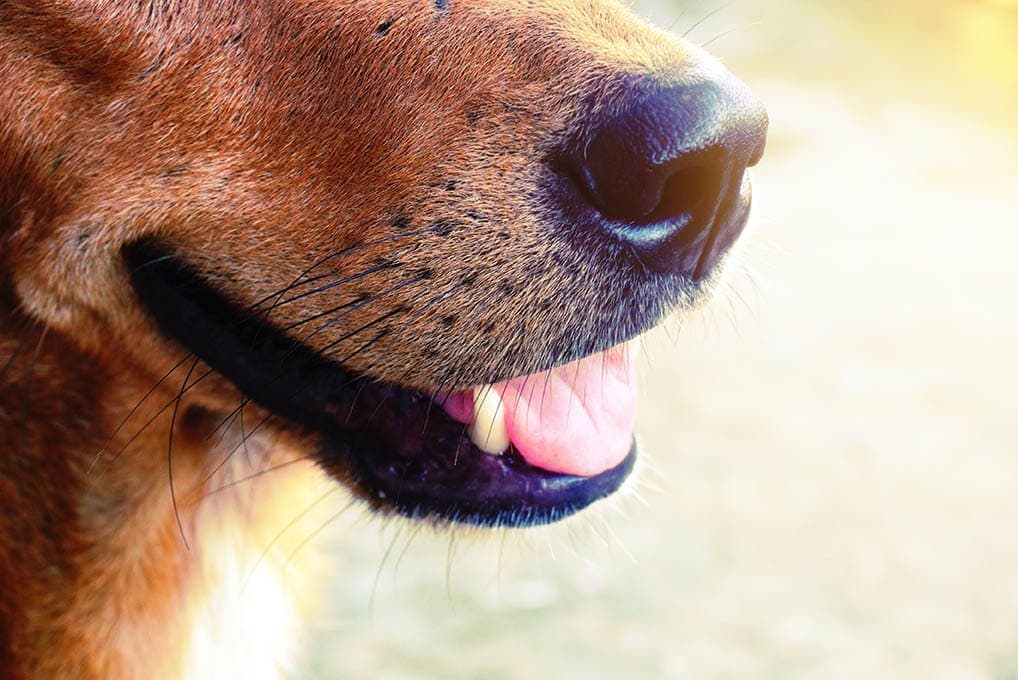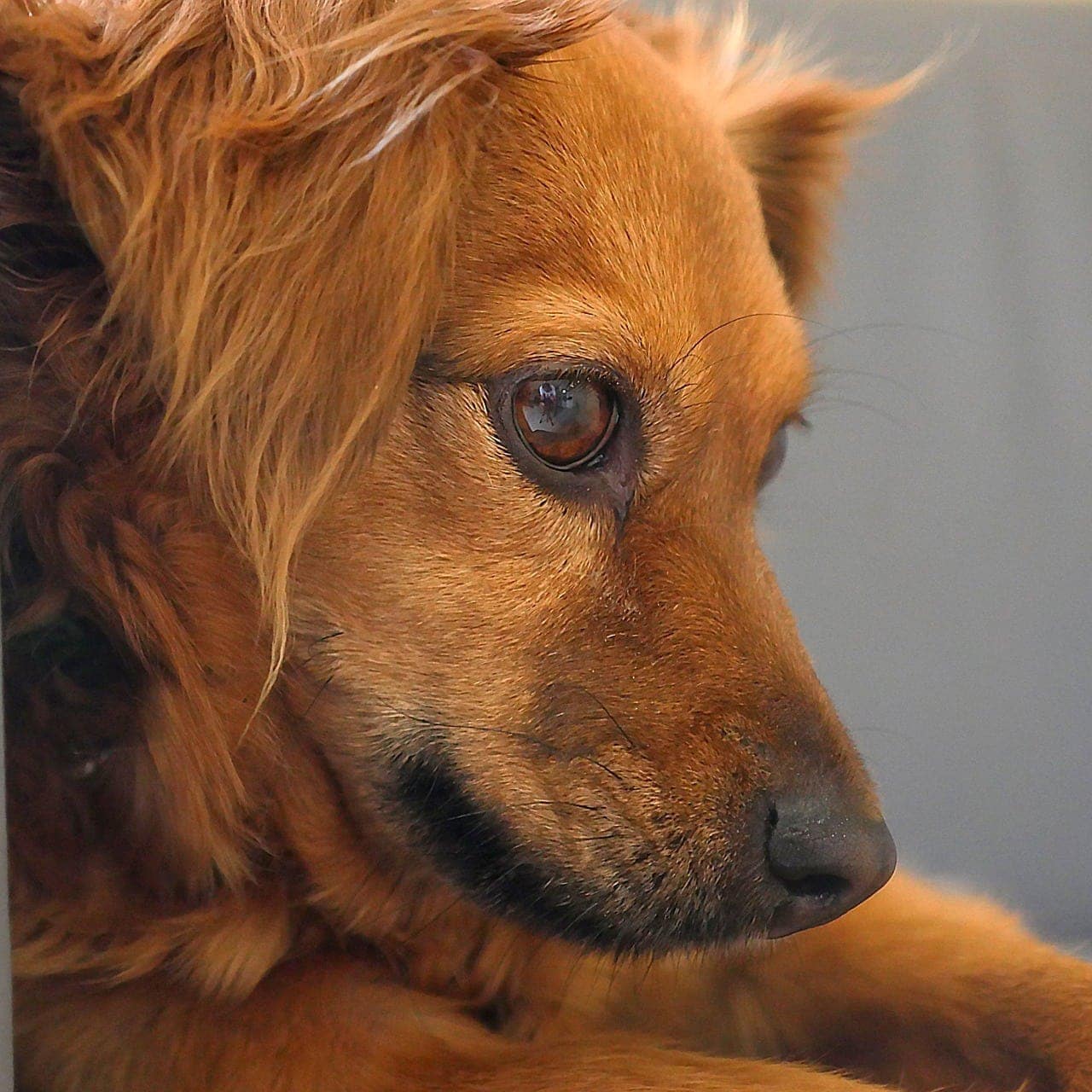Do Dog Whiskers Grow Back? What You Need to Know!

Updated on

If something happened to your dog that pulled their whiskers out, burned them, or you accidentally trimmed them while grooming, it’s common to worry if they will grow back. The short answer is yes. Your dog will grow its whiskers back. However, it would be best if you didn’t cut your dog’s whiskers.
Keep reading while we look at the different types of whiskers that your dog has and how it uses them. We’ll also look at how long it will take your pet to regrow the whiskers if you accidentally trim them, so you can know what to expect if it happens to your dog.
Types of Whiskers
While your dog isn’t as dependent on its whiskers as much as a cat is dependent on theirs, dogs get quite a bit of information from them that helps them navigate the environment. Many people may not realize that a dog has four different types of whiskers, and you will need to be careful with all of them so your dog can feel confident as it moves through your home.
Mystacial Whiskers

Mystacial whiskers are similar to the whiskers of a cat and are probably what most people think of first when thinking about whiskers. These are long hairs extending from the left and right sides of the snout. These whiskers provide tactile information about surfaces close to the mouth and are probably most helpful when sticking their head into a hole, as many breeds like to do.
Mystacial whiskers likely help your dog navigate the food bowl more accurately and tell the dog when something is in range of its jaws, which can be especially helpful during combat. If you cut these whiskers, you might notice a messy dinner area, and the dog might bump its snout off more surfaces. It can also leave it vulnerable in combat.
Genal Whiskers

Genal whiskers are on the cheeks, which are the widest part of the dog’s face. Your dog probably uses these whiskers to protect it from getting its head stuck, especially when chasing a rabbit into a hole. The genal whiskers also likely tell your dog when it’s close to a wall or other surface, and they are probably especially helpful when walking through doorways.
While cutting mystacial whiskers can cause your dog to bump its nose more frequently, cutting the genal whiskers might cause your dog to bump its head more regularly, which could lead to injury.
Supraorbital Whiskers

Supraorbital whiskers are right above the eyes and can almost resemble eyelashes. These work to protect the eyes from incoming objects and are useful when your dog sticks its head in a hole or tries to navigate narrow passages. These whiskers will also help protect the eyes from danger approaching from behind, as it will reach the whiskers before the eyes. Cutting these whiskers is especially dangerous because the eyes are extremely sensitive and vulnerable.
Interramal Tufts

You can find the interramal tufts under the dog’s chin. The length of these whiskers varies by breed, but they are always present and help your dog sense objects below its head. Interramal tufts are especially useful to water retrievers because they help your dog determine where the water level is so they don’t drown. They will also help brush-hunting dogs that keep their head close to the ground while they track prey or run into thick brush.
They will also help your dog navigate the ground when resting its head. Cutting these whiskers can make it uncomfortable for your dog to sleep, and it could be dangerous to allow your pet in the water without Interramal tufts.
Does Cutting Whiskers Hurt Dogs?
There are no nerve endings in the whisker, so cutting them won’t hurt the dog but pulling them out will. Plucking these hairs can be extremely painful, and like cat whiskers, they seem to attract small children, so you’ll need to watch them until they can understand not to touch them. Dogs can become aggressive if you pull their whiskers.
Does a Dog Without Whiskers Lose Its Balance?
It’s an urban legend that dogs lose their balance if you cut their whiskers because many people notice strange behavior from their pets that can resemble a loss of balance. However, the strange behavior is more likely to be disorientated over losing one of its senses. It may also bump into the wall or miss its food bowl, depending on what whiskers are missing.

Do Dog Whiskers Grow Back?
Yes. As we mentioned earlier, your dog will grow its whiskers back, so there is no reason to be overly concerned. Your dog will begin to adjust to life without the whiskers in a few days, and you may notice the whiskers are back in as little as 2 weeks, which is much faster than cats that can take 2 months to regrow. However, plucked whiskers can take much longer to grow and may never come back.
Summary
So do whiskers grow back on dogs? Although they grow back fairly quickly and it’s not particularly harmful to your dog, we recommend never trimming or plucking your dog’s whiskers. Your dog relies on these tools to navigate its close-range environment and can suffer injuries without them. Your dog may also withdraw and refuse to be pet without these whiskers to provide feedback. Even trimming them a little can reduce their effectiveness, so we recommend leaving them be and instructing your dog groomers o do the same.
We hope you have enjoyed reading over this guide to your dog’s whiskers and found the answers you need.
See also:
- Standard vs. Miniature Schnauzer: What Are the Differences?
- Dog Nose Bleeds: Types, Causes & What to Do (Vet Answer)
Featured Image Credit: Doucefleur, Shutterstock












